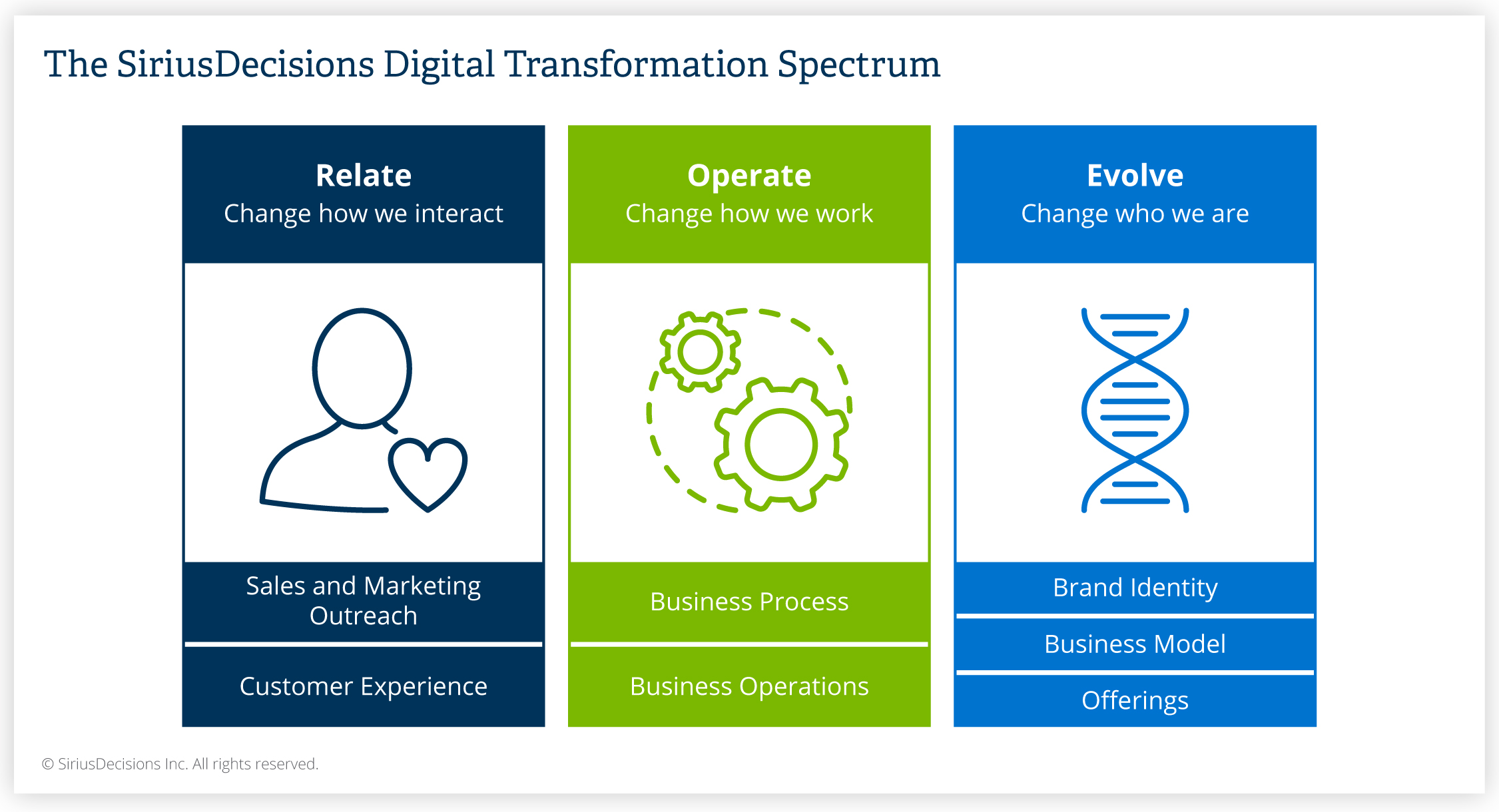Read This Before You Do a Digital Transformation Campaign
- Digital transformation is the buzziest buzz word in the B2B; the problem is that it means fundamentally different things to different people
- SiriusDecisions defines digital transformation as the application of technology for business change
- SiriusDecisions provides a definitional framework for B2B marketers to organize their own campaign, programs and messaging to buyers of digital transformation solutions
As a research fellow at SiriusDecisions, I’m passionate about the topic of digital transformation because I see a huge need for marketers to understand what digital transformation really means. So many times, I’ve observed mandates or direction coming down from high onto the marketing organization to promote or market against the theme “digital transformation.” The problem is that digital transformation is such a high-level term and means so many different things to so many different companies. It’s impossible to use it as a buyer need for campaigns or messaging.

This is why we designed the SiriusDecisions Digital Transformation Spectrum – a framework that categories the types of business change that are enabled by digital transformation. This level of categorization provides the real authentic buyer needs that fuel digital transformation initiatives.
When isolating the buyer need for digital transformation, marketers should ask this question: What type of business change is our buyer audience trying to make? The answer tells you what the buyer need is and what you need to hook your messaging onto to make sure it resonates. If you don’t hook the messaging onto these types of business change, the digital transformation messaging will most likely be too high-level or lofty to connect and capture buyer interest.
Our research isolated three primary types of business change enabled by technology – relate, operate and evolve.
Relate. The business change is focused on altering how the company presents itself to the market or modifies how it engages customers or buyers. This is about your customers applying technology to transform how their company interacts with its marketplace. The buyer need is to change what they do within their buyer or customer journeys – altering the information exchange or interactions they have with their customers.
Operate. The business change is focused on altering how the company runs – the workflows, the internal routines, system, processes and infrastructure. This is about your customers applying technology to transform how their company does its work. The buyer need is to change how they build and deliver products and services and the internal routines, systems, business processes, infrastructure and data.
Evolve. The business change is focused on altering the fundamental core attributes of the company – the DNA. This is about your customers applying technology to change who they are – the DNA, their culture, what makes their company, their company. The buyer need is to change their brand, their business model or their products and services.
Our advice is that the real focus of digital transformation should be on the transformation – the business change enabled by technology. Align your campaigns to the components underneath the three types of digital transformation business change, such as “sales and marketing outreach” or “customer experience” to really start getting at what buyers care about within the lofty realm of digital transformation. The Digital Transformation Spectrum is an actionable framework to help you design your digital transformation messaging programs and campaigns.